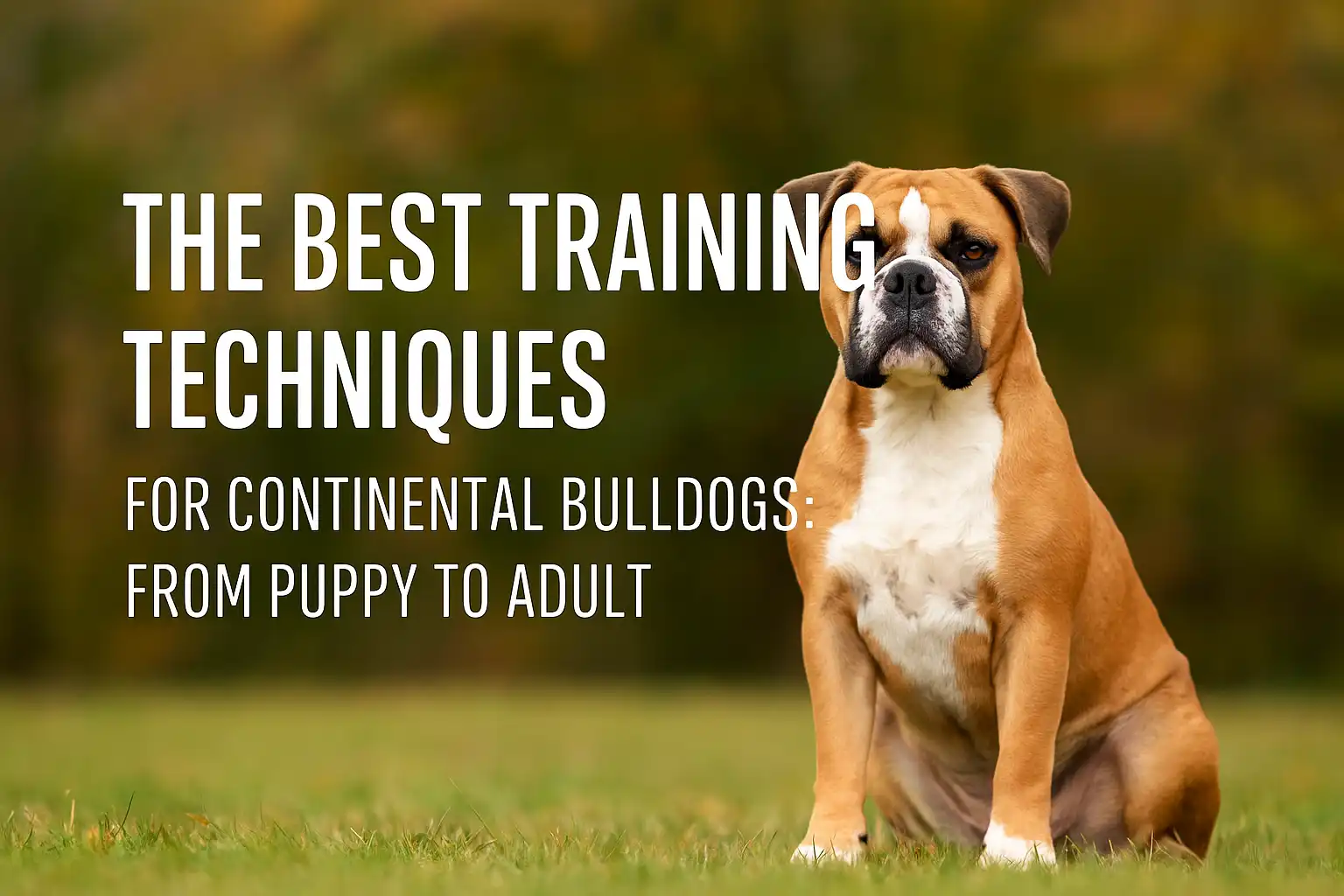The Best Training Techniques for Continental Bulldogs: From Puppy to Adult
Introduction
Training your Continental Bulldog is essential for a happy, well-behaved companion. These dogs are loyal, affectionate, and intelligent, but they can also be stubborn if not guided properly. In this expanded guide, we’ll cover practical training techniques, behavioral management strategies, and step-by-step tips to help you build positive habits. Whether you’re working with a playful puppy or a mature bulldog, these training techniques will help you create a strong bond and a well-mannered companion. For additional expert resources, visit AKC Training Resources.
Why Training Matters for Continental Bulldogs
Training goes beyond basic obedience. It provides structure, builds trust, and ensures safety in various environments. Bulldogs thrive on consistency and clear rules. Without proper guidance, behavioral issues like chewing, barking, and separation anxiety can develop. Learn more about positive methods at PetMD Dog Training Tips.
Start Early: Puppy Socialization
The first 12–16 weeks of life are the foundation for your bulldog’s behavior. Expose your puppy to new sounds, people, and environments to prevent fear-based aggression later. Supervised playdates with other dogs teach proper canine manners. Puppy classes also reinforce good habits in controlled settings. For structured programs, see ASPCA Dog Training.
Core Training Commands and Why They Matter
Start with these essential commands:
- Sit: Helps with impulse control and greeting manners.
- Stay: Promotes patience and safety during meals or door exits.
- Come: A lifesaver outdoors; ensures recall when off-leash.
- Leave it: Prevents ingestion of harmful items.
- Down: Encourages calmness in overstimulating situations.
Practice commands in short 5-minute sessions to keep your dog engaged. Reward good behavior immediately with treats or praise. For more detailed steps, read Cesar’s Way Training Tips.
Leash Training and Outdoor Manners
Leash pulling is common in strong breeds like Continental Bulldogs. Begin indoors by walking a few steps and rewarding a loose leash. Gradually increase distance and distractions outdoors. Use a sturdy, no-pull harness instead of a collar to protect the airway. Explore harness options at Dogster’s Harness Guide.
Housebreaking Tips and Crate Training
Crate training supports potty training and provides a safe space. Always associate the crate with positive experiences like treats or toys. Take your dog out frequently—especially after meals and naps. Never punish accidents; redirect instead. For more strategies, visit Humane Society House Training Guide.
Addressing Stubbornness
Bullish personality can mean resistance to commands. If your dog ignores you, avoid yelling or punishment. Instead, use high-value rewards and break commands into smaller steps. Keep training upbeat and patient. Read advanced reinforcement techniques at Positively Dog Training.
Mental Stimulation and Enrichment Activities
Training isn’t just about commands—it’s about preventing boredom. Provide food puzzles, scent games, and short obedience drills to engage the brain. Daily walks combined with structured playtime curb destructive behaviors. See enrichment ideas at Preventive Vet Enrichment Tips.
Common Behavioral Challenges and Solutions
Jumping: Ignore the behavior and reward calm greetings.
Nipping: Redirect to chew toys and stop play briefly to teach boundaries.
Chewing: Offer durable toys and supervise free time.
Professional Training Support
If you encounter aggression, severe anxiety, or persistent disobedience, professional help may be needed. Certified trainers provide customized plans. Find reputable trainers at the Association of Professional Dog Trainers.
Sample Training Schedule
- Morning: 10-minute obedience practice + short walk.
- Afternoon: Interactive puzzle toy or scent game.
- Evening: Leash walk and basic command reinforcement.
Health and Safety Considerations
Continental Bulldogs are brachycephalic, making them prone to heat stress. Avoid midday training in summer, and always provide water breaks. Monitor breathing during exercise and adjust intensity as needed.
Conclusion
Training a Continental Bulldog requires consistency, patience, and positivity. Start early with socialization, use clear commands, and provide both mental and physical enrichment. With persistence and the right approach, you’ll enjoy a well-behaved, confident, and loving companion for years to come. For more resources, check PetMD Dog Training Library.

